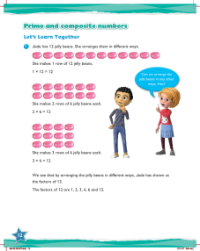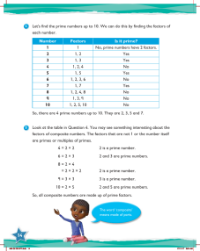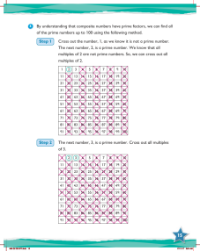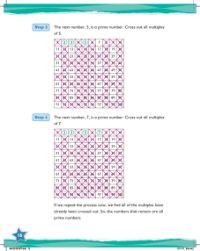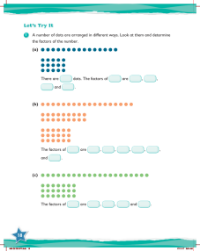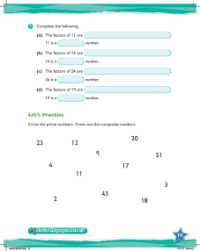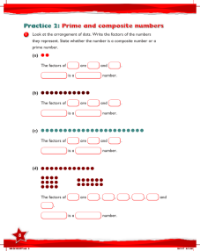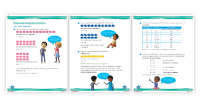Max Maths, Year 6, Learn together, Prime and composite numbers (6)
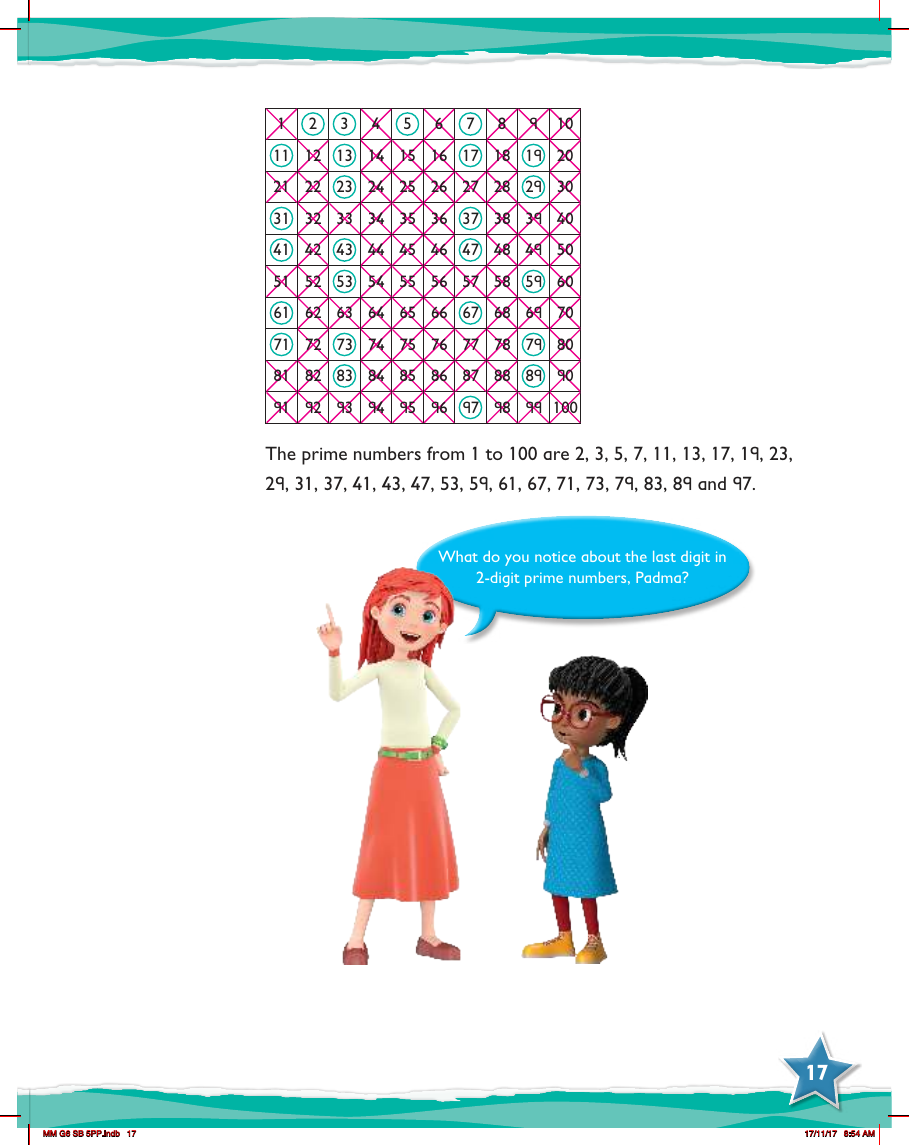
Maths Resource Description
In the Max Maths curriculum for Year 6, students explore the fascinating world of prime and composite numbers. The lesson provides a comprehensive list of numbers from 1 to 100, allowing students to visually identify and differentiate between prime numbers—those which have only two distinct positive divisors, 1 and the number itself—and composite numbers, which have more than two divisors. The prime numbers within this range are clearly highlighted for the students: 2, 3, 5, 7, 11, 13, 17, 19, 23, 29, 31, 37, 41, 43, 47, 53, 59, 61, 67, 71, 73, 79, 83, 89, and 97. This list serves as a valuable reference for learners to understand the concept of primality.
An interesting observation is prompted during the lesson when students are asked to consider the last digit of two-digit prime numbers. Padma, a student, is specifically questioned about this pattern. This enquiry encourages critical thinking and pattern recognition, as students might notice that the last digits of two-digit prime numbers are limited to 1, 3, 7, or 9. This pattern excludes even numbers and the digit 5, as numbers ending with these digits (other than the prime number 2 and 5 itself) are divisible by 2 or 5, and therefore cannot be prime. This observation is an excellent example of how engaging with numerical data can lead to deeper mathematical insights and understanding.
